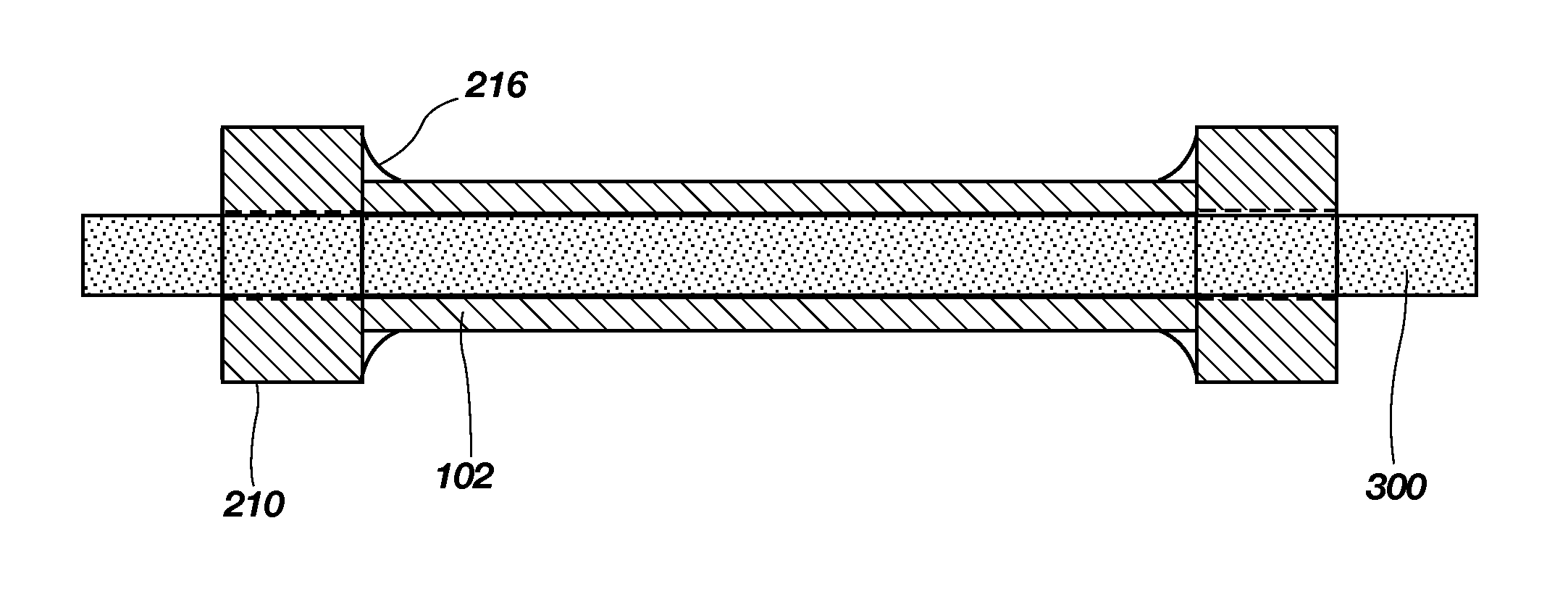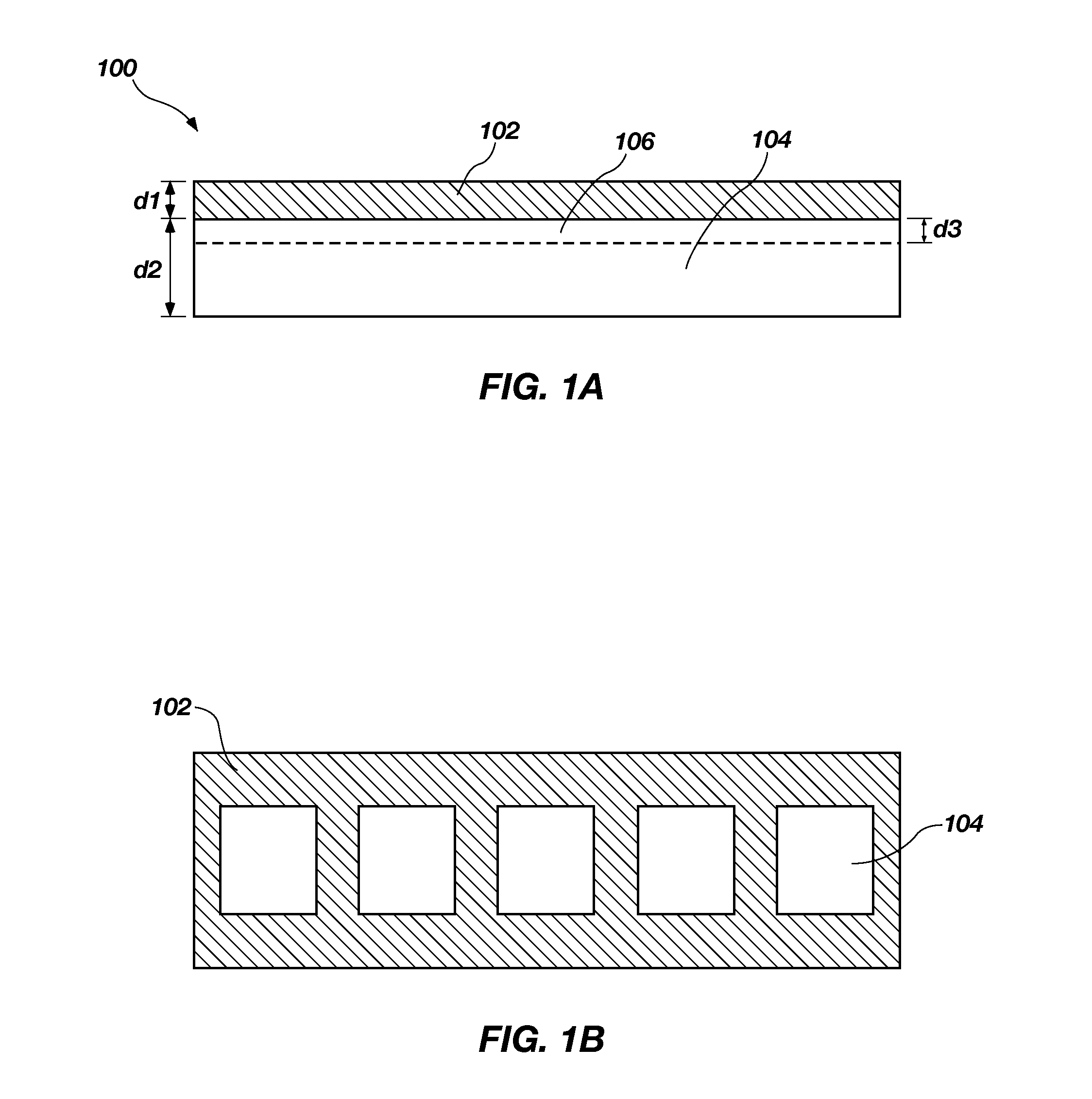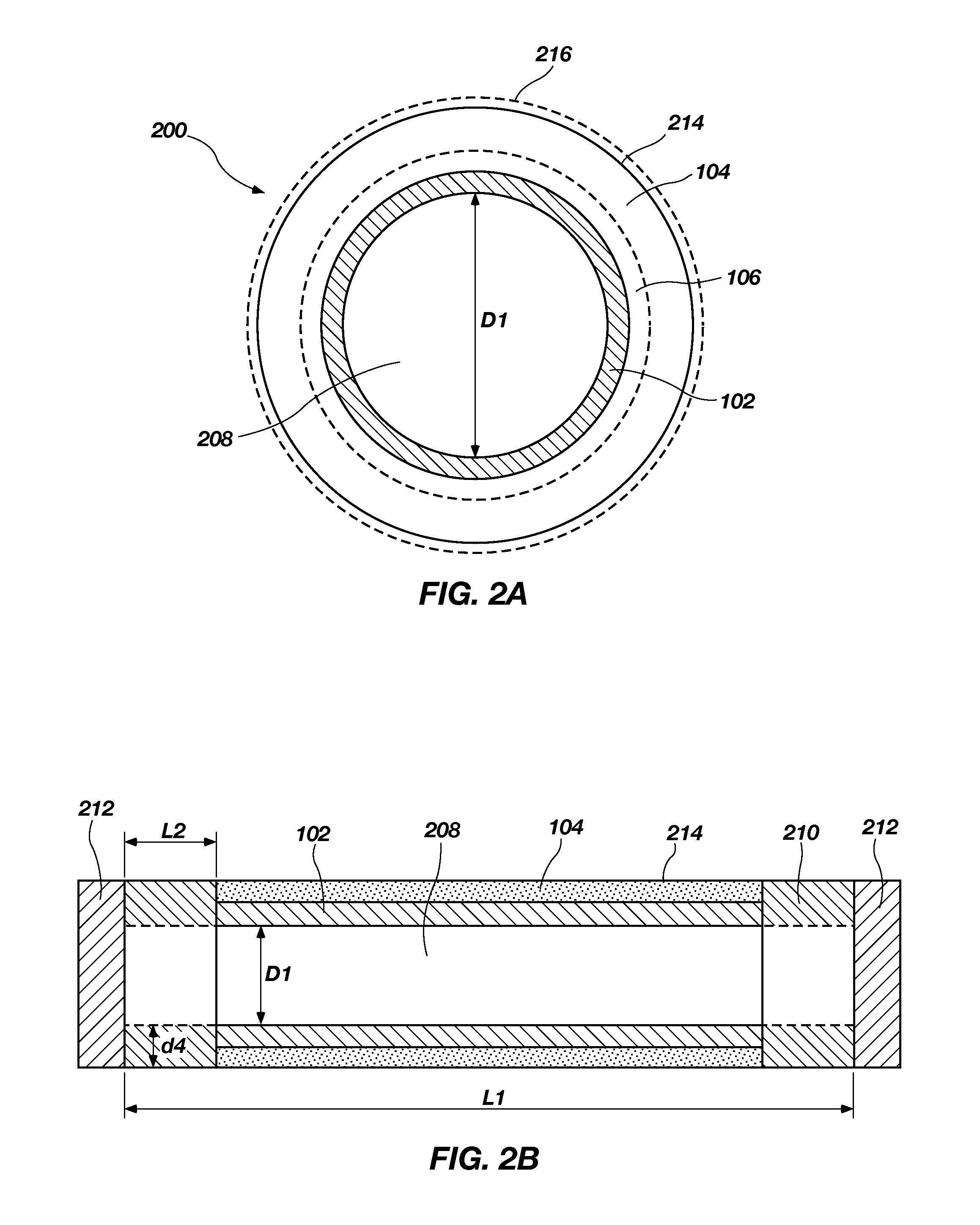Cladding material, tube including such cladding material and methods of forming the same
- Summary
- Abstract
- Description
- Claims
- Application Information
AI Technical Summary
Benefits of technology
Problems solved by technology
Method used
Image
Examples
Embodiment Construction
[0019]Embodiments of the present disclosure related to a cladding material that may be used in a containment vessel, such as a fuel tube, for nuclear fuel (i.e., fissile material), used in a nuclear power plant or other reactor or used in an industrial process. The cladding material may have a multi-layered structure including a metallic material that includes a zirconium alloy and a ceramic matrix composite (CMC) layer that includes continuous silicon carbide fibers and a matrix comprising a silicon carbide ceramic. The cladding material may be used to form a multi-layered tube that includes the metallic material as an inner liner and the ceramic matrix composite as an outer support. The multi-layered tube may be used, for example, as a fuel cladding tube for a nuclear reactor, a chemical processing heat exchanger, a steam generator, a gas phase cooling system, a radiator or a combustion chamber liner. The multi-layered tube may further include an outer metallic liner that may, opt...
PUM
| Property | Measurement | Unit |
|---|---|---|
| Temperature | aaaaa | aaaaa |
| Thickness | aaaaa | aaaaa |
| Thickness | aaaaa | aaaaa |
Abstract
Description
Claims
Application Information
 Login to View More
Login to View More - R&D
- Intellectual Property
- Life Sciences
- Materials
- Tech Scout
- Unparalleled Data Quality
- Higher Quality Content
- 60% Fewer Hallucinations
Browse by: Latest US Patents, China's latest patents, Technical Efficacy Thesaurus, Application Domain, Technology Topic, Popular Technical Reports.
© 2025 PatSnap. All rights reserved.Legal|Privacy policy|Modern Slavery Act Transparency Statement|Sitemap|About US| Contact US: help@patsnap.com



